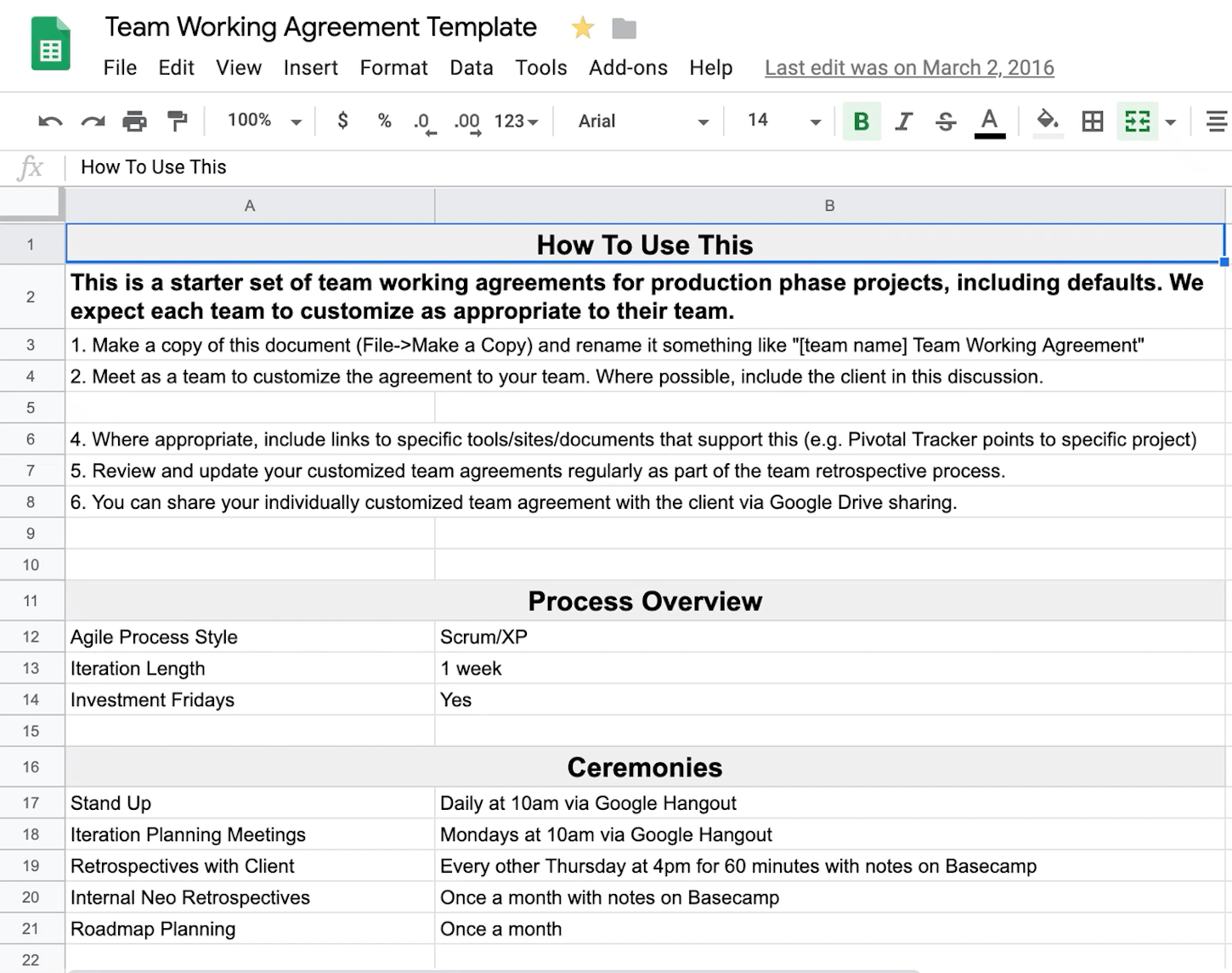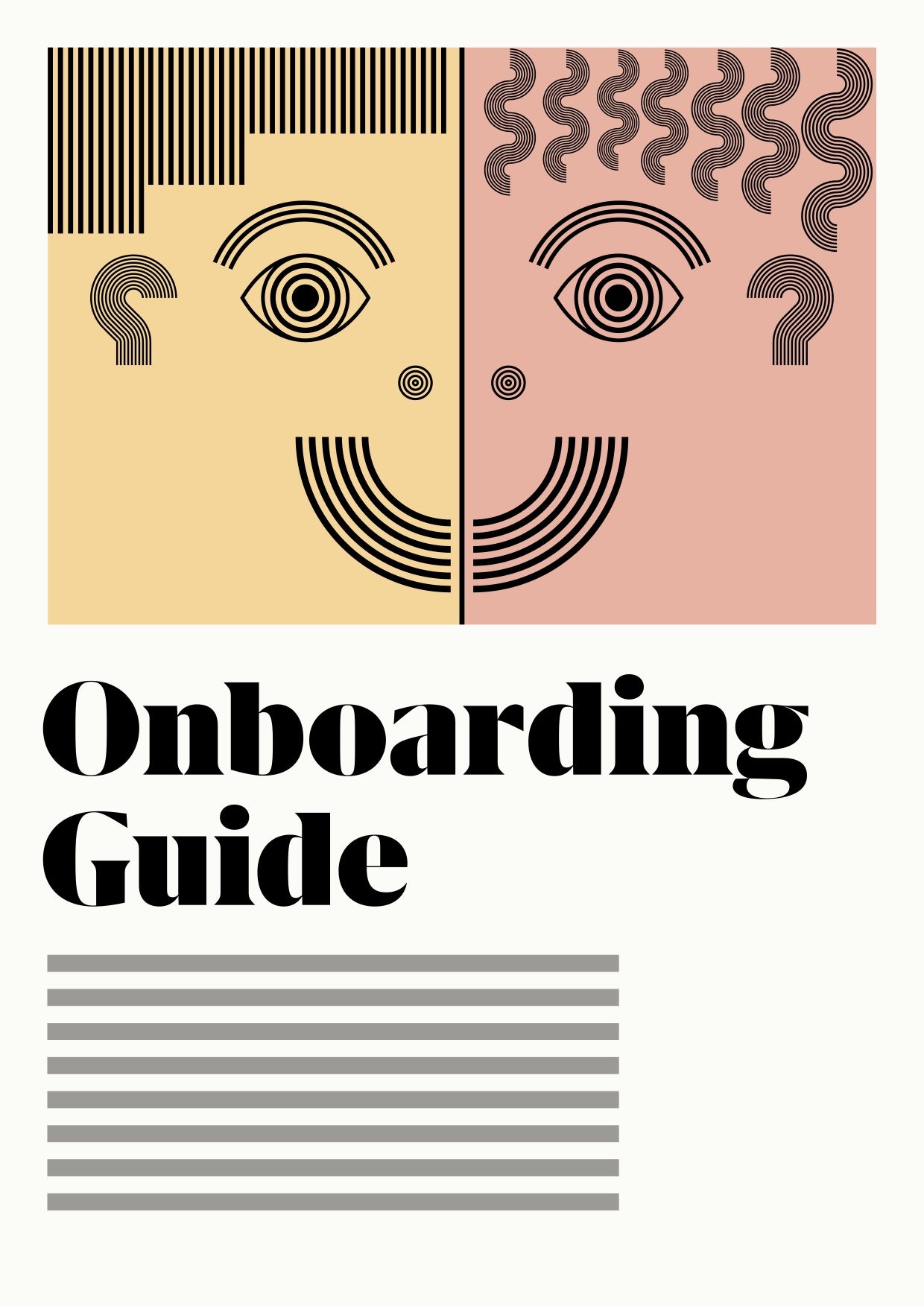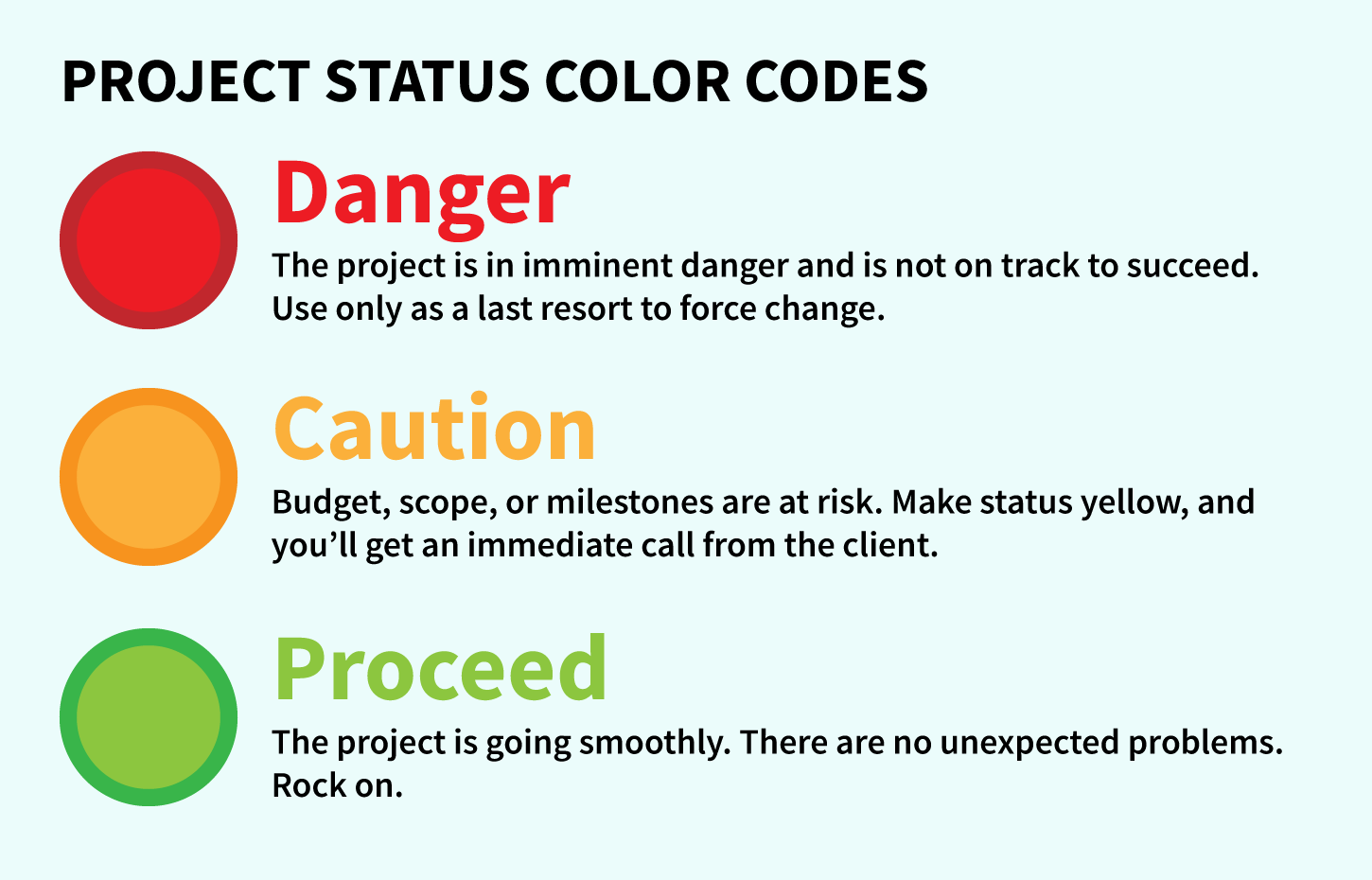The beginning of every working relationship is arguably the most important phase. As Gail Swanson put it in The Web Designer’s Guide to Client Onboarding, “At the start of a project, you either smooth the way for your project or set traps you'll stumble over later. “
In fact, according to digital transformation and business agility consultant Jeff Gothelf, the onboarding process begins from the moment you start discussing the possibility of working together.
So setting expectations of how the engagement will start, how you will measure success, and the various activities you will engage in are critical. In this article, we’ll explore this phase in detail and hear from a range of experts how you should approach managing expectations when onboarding new clients.
Frame the work as a journey
When freelance WordPress developer Hannah Smith begins working with a client, she manages their expectations by framing the work they’re about to do together as a journey.
“I explain that whilst I have done similar journeys to this before, no two journeys are the same, and there will be unique points of difference,” she says. “The majority of these differences stem from the client and what they are asking for—their requirements—and how many times they have done a journey similar to this—their experience.”
The areas Hannah usually discusses in detail with the client include:
- When they hope to have things delivered by and why
- How much they need to be involved and when/how they’ll be available
- Whether what they’re asking for is easy or hard to accomplish
- The order things will be delivered in
- The inevitable changes that will occur and how they will be handled
- The budget and how flexible it is
“Have these conversations before you start, and take the necessary time to ensure your plans are understood properly,” Hannah recommends. “Often clients want you to jump in and get working—resist this wherever possible.”
Build a team working agreement
For organizational designer Jeff Gothelf, the (co-)author of several books including Lean UX and Sense & Respond, it’s crucial to build a team working agreement with a new client.
“This basic but important document puts in writing the expectations we have of working together,” he explains. “Things like when and how we will meet, where we will store documents, our preferred communication channel—email, Slack, video conferences—all end up in this agreement. This way there are few questions about what we’re doing and when.”

If, after a few weeks of working together, Jeff and his client find flaws in their original set of working assumptions, the team working agreement may be amended.
Communicate like an ally
Rachel Gertz, digital project manager trainer and co-founder of studio Louder Than Ten, suggests remembering that new clients are us—flipped in a mirror.
“They bleed, worry, have families, and… are running a full project load,” she explains. “Our project often displaces another project they have on their already full plate. It's our job as project leads to set clear boundaries and expectations about their commitment to the project and the people involved, so they can feel safe and supported rather than overwhelmed. “
"Rachel suggests using project glossaries to deflate the jargon, creating simple and elegant onboarding documents, and hopping on a video call and getting to know your point of contact before you schedule a full team kickoff."
To do that, Rachel recommends seasoning that first welcome email with a warm and relaxed tone. It should communicate something like the following:
"I've got your back, we're in this together. Here's what you need to be able to commit to each week. Here's how I can help. Here's what we'll push back on to make sure your project is successful. Here's what we're here to do together and here's how you can help."
To reinforce this message, Rachel suggests using project glossaries to deflate the jargon, creating simple and elegant onboarding documents that outline a clear welcome process and project timeline, modelling the behaviors you are looking for, and hopping on a video call and getting to know your point of contact before you schedule a full team kickoff.
“Taking the time to meet clients where they are shows them you're invested in them as well as in their project,” Rachel adds. “Being an ally means using great communication to clean that client mirror, so you can see your reflection every day.”

Talk tech without alienating clients
One of the main things veteran product designer Jeff Gothelf works to impress on his prospective clients is that technology provides us with a tremendous opportunity to learn from our customers and users.
“I explain throughout the pitch and onboarding process how this technology impacts our ways of working and in all likelihood will drive many changes in our original plans,” he points out. “I set the expectation that, in order for this to be a productive partnership, the client must rethink their level of involvement from an external observer—occasionally brought in to approve work—to a regular, active participant in the process. If they’re not willing to commit to that, they’re not the right client for me.”
You might also like: How to Fire a Client [With Script].
Avoid project pitfalls through critical conversations
Most project problems stem from poor communication, finds Dean Schuster, user experience design strategist and principal at agency truematter.
“This is especially a problem when making complex digital products,” he cautions. “To run a successful project, we must guide our clients carefully and skillfully with a few critical conversations before we even start working.”
Dean therefore recommends that, when onboarding clients, you must:
Talk about money
Begin the project by revisiting the proposal, project cost, and terms of payment. Don’t assume the client project manager is fully aware of budgetary discussions. Make sure everyone is on the same page at the outset. Return to this subject frequently throughout the project.
Find the person who pays the invoice
This person may very well end up being your best friend, but only if you know who they are and how to reach them quickly.
Single out the single point of contact
Both you and your client should name one person who is authorized to make project decisions.
Directives, ideas, and decisions must flow through that channel.
Reiterate scope and process
Early in a project, you want clarity. No matter how clearly you think you’ve written your scope document and no matter how obvious your process may be, chances are your client has a different understanding. Walk through scope, process, and deliverables together at the outset of work.
Restate the end state
If you have not yet defined success, do it as soon as the project starts. What metrics will show that you’ve accomplished everything you set out to do? If you and the client agree on these (in writing), you can judge the project objectively later.
Note your non-negotiables
Both you and your client have lines you won’t cross. Be clear about these with each other. You may not be available after hours. Your client may be okay with everything except a slow app.
Verify assumptions
Every project has assumptions. A few that come up all the time are technology platform, development tools, brand standards, and mutual responsibilities. Confirm everything on your list before you start working.
Set up regular feedback discussions
At the beginning of your project, schedule regularly occurring interactions with your client. It doesn’t matter whether you call this a scrum, stand-up, or meeting. It doesn’t matter if you do this in-person, by phone, or via chat. Just do it and do it at regular intervals.
Pinpoint everyone with the power of the pen
Identify every last person who must sign off on any deliverable. Once you know who they are, make sure they are a part of all regular project discussions.
Establish project status
Meeting regularly with clients is not enough. You must regularly document status. You can author an actual document or use an online tool. Just be sure to include budget, accomplishments, impediments, questions, and next steps. Go through this document with the client before you begin working. It may save your project down the line.

This list is based on years of experience and, all too often, mistakes. “If you neglect any one of these conversations with your client, you may be in for a rough ride,” Dean warns. “If you have these conversations before work begins, your project will proceed smoothly and everyone will be far more likely to achieve their goals.”
You might also like: Project Budget Management: How to Keep Your Clients Happy.
Focus on creating a brilliant relationship with your client
Amy Brusselback, principal of branding agency Design B&B, firmly believes that a lot of brilliant design is down to having a brilliant relationship with your client.
“We’d all like to think that quality of work and content of thinking drives how work is assigned and progresses, but we know it’s primarily about chemistry,” she points out. “Designers need to lean into that reality. Fundamentally, humans need safety and belonging—even clients—so focusing on creating those conditions from the start is key to a healthy long-term client relationship.”
To do that, Amy suggests you:
Start responses with “yes”
Then follow with what needs to be true to deliver the request, timing, need, cost, etc.
Make what is hidden overt
New clients really want to know what to expect when. Remember that they are managing their stakeholders’ expectations, so equipping them to handle those needs with a timeline and examples will provide the reassurance (read: safety) desired.
Conduct one-on-one informational interviews with key stakeholders
It’s such a simple, powerful tool. Everyone wants to be heard, and it’s amazing how many people have so few instances where they are intently listened to. Beyond the project goals and fears, you’ll learn a lot about how decisions get made, what the company values, and customs and taboos, which will enable project alignment down the road.
Share generously
Too frequently, creatives see their work as something to be protected or controlled. It is often done back at the studio, behind closed doors, without visibility to clients. It’s time to proactively share our work, our approaches, and our thinking early, often, and generously.
"Fundamentally, humans need safety and belonging—even clients—so focusing on creating those conditions from the start is key to a healthy long-term client relationship.”
Take an active role in directing the feedback on work
Don’t let it happen organically. Begin feedback by saying, “let’s start with what is working.”
You might also like: 3 Project Management Strategies to Prevent Scope Creep.
Identify the type of client you’re working with
Tera Simon is the delivery director at Globant, where she oversees project management and agility operations. She points out that when your team is hired by a client, it’s because they see you as an expert.
“You and your team have the skills and ability to make a client's vision become reality,” she explains. “This is your job. Unfortunately, being your client isn’t your client’s job. In most instances this business transformation is just another task that's been added to an already full plate, and no one has taught them how to be a client. It’s up to you to determine how best to handle the situation.”
To do that, Tera says you need to know what type of client you’re working with. There are numerous types of clients out there, and identifying the type of client you're working with will help protect your team from scope creep. Here are three Tera suggests keeping an eye out for.
"Unfortunately, being your client isn’t your client’s job. In most instances this business transformation is just another task that's been added to an already full plate, and no one has taught them how to be a client.”
The curious client
This client is extremely interested in what you do, and they want to be involved in every step of the project. They will ask a lot of questions and request multiple reviews during the course of the project. If you are working on a fixed priced project, this client will be very challenging for you.
The best way to handle a curious client is to ask a lot of questions up front. Try and gain an understanding of their working style, and then set appropriate boundaries in your contract. Also, remember to address issues directly. If your client continues to disrupt your work, explain to them that you are doing your best to stay on schedule and need to focus on the task at hand. Offer to schedule a meeting to go over all of their questions. This way you are the one setting the boundaries, not the client.
The know-it-all
We've all encountered this person before. They think they know how to do your job, and how to do it better than you. In their minds, the only reason why they hired someone is because they are too busy to do it themselves. This client always has an opinion and tends to be the loudest voice in the room. They will also most likely interrupt you and tell you how they would do things differently.
It's important to tread lightly with this type of client, and know when to pick your battles. If you try and reason or argue with this type of client, you will lose almost every time. Instead, try transferring the credit to them or compliment them when they provide a good suggestion.
The underling
The underling tends to be the easiest personality to work with because they can dedicate their time to the project. This means you get instant feedback, someone who will always answer your emails and is actually excited to be on the team. The problem? They are not the key stakeholder and do not have the authority to approve anything.
This person is your largest red flag for scope creep. When dealing with the underling, make sure you have clear direction on who has approval. If you are doing a demo, have both your primary point of contact and the project approver in the room. This will protect you from having a key stakeholder swooping in and pooping all over your hard work.
You might also like: Client Onboarding: How a One-Man Agency Qualifies Leads and Turns Them Into Clients.
Keep expectations in check
Of course you need to keep client expectations in check. “How well you have set expectations is likely to be tested midway through delivery when the client asks for something difficult, impossible, or even unreasonable,” freelance WordPress developer Hannah Smith predicts. To stay on track and within budget, follow the tips outlined in this article, and you’ll avoid unnecessary surprises. Set expectations early, and refer back to them often. Remember, the way you form the relationship with a new client at the very beginning is absolutely critical.
Further Resources
- Setting Client Expectations by Paul Jarvis
- Managing Client Expectations by Brett Harned
- Setting the Right Expectations with New Clients by Brennan Dunn
- Podcast: Manage Expectations The Right Way
Read more
- What is a Design Brief and How to Write One
- 5 Reasons Why You Cannot Use a Contract You Found Online for Your Business
- How to Write Excellent Commerce Content for Your Clients
- How to Drive Sales and Customer Engagement with Social Commerce
- Client Collaboration: 8 Tips to Deliver Successful Projects
- How To Help Your Clients Monetize Instagram
- How to Save Your Clients Money with Shopify Shipping
What steps do you take to set expectations early with clients? Share your thoughts in the comments below!

